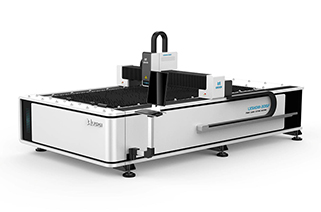
Why does the fiber laser cutting machine add auxiliary gas when cutting metal materials? There are four reasons. One is to let the auxiliary gas react with the metal material to increase the strength of the ability. The second is to help the equipment blow off the slag from the cutting area and clean it Slitting; the third is to cool the adjacent area of the slit to reduce the size of the heat-affected zone; the fourth is to protect the focusing lens and prevent the combustion products from contaminating the optical lens.
So what are the auxiliary gases commonly used in fiber laser cutting machines? Can air be used as an auxiliary gas?
Laser cutting experts tell you that fiber laser cutting machines can choose three types of gases: nitrogen, oxygen, and air as auxiliary gases when cutting metal sheets.
Their functions are as follows:
Nitrogen: When cutting colored plates such as stainless steel or aluminum plates, nitrogen is selected as the auxiliary gas to cool and protect the material. The cross section of the cut metal is brighter and better when used.
Oxygen: When cutting carbon steel, oxygen can be used because oxygen has the effect of cooling and accelerating combustion to accelerate cutting. The cutting speed is the fastest of all gases.
Air: If you want to save costs, you can use air to cut stainless steel, but there is a slight burr on the reverse side, and it can be polished with sandpaper. That is to say, the fiber laser cutting machine can select air as the auxiliary gas when cutting certain materials. When using air, an air compressor must be selected. However, laser cutting experts suggest, for example, a 1000-watt fiber laser cutting machine. 1mm carbon steel and stainless steel are best cut with nitrogen or air, the effect will be better. Oxygen will burn the edges and the effect is not ideal.